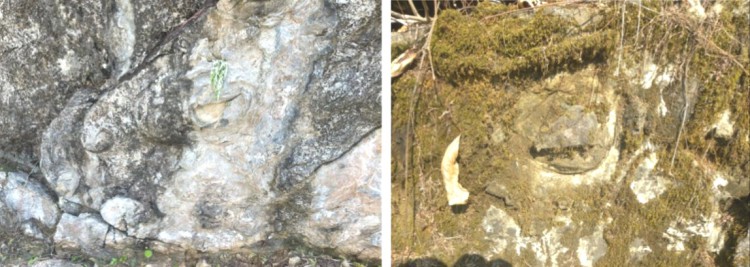




















Wednesday, Oct 02, 2024 06:15 [IST]
Last Update: Wednesday, Oct 02, 2024 00:41 [IST]
GANGTOK: Fossils older than the Himalayas itself were found in Sikkim's
Mamley village in Namchi District in 2008. Despite the area being notified as
one of the 32 geo heritage site in the country in 2014 by Geological Survey of
India, not much attention was laid upon the geo heritage site.
On
September 19, Chief Minister PS Golay acknowledged the discovery, wherein he
stated in his social media, "Our government is committed to transforming
this remarkable site into a world-class, cutting-edge fossil theme park under
department of Mines & Geology. The park will offer an immersive experience
with a captivating light and sound show narrating the history of our planet, a
geological museum housing invaluable specimens, and exhibits showcasing index
fossils from across the globe.”
“Similarly,
we plan to develop a geopark village that will serve as a hub for researchers,
scientists, and tourists alike, making Sikkim a destination of international
significance in the fields of geology and paleontology".
Mamley
village is 6 kilometres northeast of Namchi town with a population of 1079
people. Keeping the possibility of a stromatolite fossil park open, the State
government has acquired 4.312 hectares of land. The government aims to convert
the area as a fossil park as a hub for researchers and scientists, uncommon
currently in the entire North Eastern region. It will also preserve rare
evidence of early life and evolution. However, there are ongoing and proposed
hydro power projects, road and tunnel construction and other developmental
civil construction close to the area.
More such
stromatolites bearing dolomites are observed in Tatopani, 20 km further
upstream of the Rangit River. Tatopani at Reshi also called Phur Cha Chu is a
hotspring, already popular as a tourist spots. At present the site is left
untouched and chances of degradation of these priceless Geo heritage assets
remain high.
Mines &
Geology Secretary Dicky Yangzom stated, "We are happy that the discovery
that was made in 2008 has finally been publicized and the whole area stretching
almost 50 square kilometres can be developed as a geo park. For the geo park
the people living in these areas will not be displaced, it is just a matter of
conserving what is there. Much of it depends on the local people who want to go
for geo tourism or a sustainable livelihood in these areas. There has to be
awareness on this issue, together with tourism department we have to work on
making it geo heritage tourism belt. This is new for us as well, together with
the people we have to train on making it geo heritage park".
The
fossil in contention is stromatolites, which are over 3.5 billion years old.
The Meso-Neoproterozoic stromatolites have been well preserved in the Buxa
Dolomite formation of Rangeet River Valley along the road from Tatopani to
Reshi and Namchi town to Mamley village.
Stromatolites
are structures formed by huge colonies of cyanobacteria, also called blue green
algae which contributed to the formation of Earth's atmosphere including
oxygen, carbon and nitrogen. The diameter of the stromatolites varies from 10
cm to 80 cm and transverse section is ellipsoidal in shape.
The
circular structures on the Dolomite boulders located at Mamley village were
first identified by Sikkim's Mines & Geology department with Professor VC
Tewari of Wadia Institute of Himalayan Geology, Dehradun in 2007-08. It was
proved that the Conophyton found in the Buxa Dolomite is about 1.5 billion
years old.
Speaking
on the discovery made, Keshar Luitel, Joint Director with State's Mines &
Geology shared, "These are remnants of the first unicellular living
organisms, which were preserved in the Meso-Neoproterozoic Dolomite of Buxa
formation which is 1.5 billion years old. This is even older than the formation
of Himalayas, which started forming some 35 million years ago. We believe these
are remnants from the ancient Tethys Sea, which were trapped in the rocks after
the formation of Himalayas".
He added,
"These stromatolites could be spread across 20-40 square kilometres in
area from Mamley village to Kholaghari and stretching as far as Reshi area in
Geyzing District. There could be more than stromatolites in the area; it could
have remnants of Tethys Sea including shallow marine condition like current
bedding which are all preserved in the rocks and boulders. We believe in the
entire area there could be more fossils. We need to do a detailed micro-level
study under the guidance of Geologicial Survey of India".